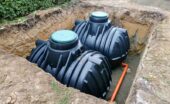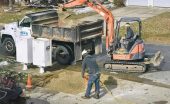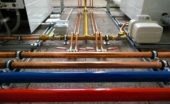Plumbing Mistakes Builders Make To Watch Out For
Written by SayBuild Administration // June 3, 2014 // Plumbing // Comments Off on Plumbing Mistakes Builders Make To Watch Out For

Buying a new home is a scary nerve-wracking process. The stress of buying alone is enough to set some people over the edge; add in the possibility of plumbing mistakes and they’re ready to tear their hair out. Most of these mistakes should be caught by a building inspector but being educated about them will make you a smarter buyer.
Horizontal Vents
Pipes are designed with built-in vents that provide air flow. Wet vents are basically just oversized drain pipes, but dry vents will have a short off-shoot. These should all be at 45-degree angles to the pipe to prevent water and sediment from becoming trapped. Vents that are installed horizontally will cause drain problems and clogs fairly often.
Short Drain Slopes
Drain slopes are built to provide a way for water to slowly flow out with any solids it is carrying. The velocity of the water is a delicate balance; it needs to flow slowly enough to carry sediments but fast enough that the pressure cleans off the sides of the pipe. The ideal slope is 1/4" per foot of pipe; any slight difference in this measurement will result in a slower flow or a clogged drain.
Inadequate Clean-Outs
Clean-outs are installed to provide plumbers a place to access in the case of a clogged drain. Check that they are installed at any change of direction in the pipes, at the upper terminal of horizontal branches, and within 10 feet of the sewer drain. They should also be accessible to the plumber; sometimes they are installed in a way that makes it difficult for the plumber to get to.
Water Heaters Improperly Installed
Water heaters are required to be installed with a pressure and temperature relief system. Without these, a failing thermostat could cause the pressure and temperature to continually rise until the heater explodes with boiling water and shrapnel. Plumbers should take a look at any suspicious-looking plumbing in a newly-acquired home to prevent emergencies like water heater failure.
Mismatched Pipes
Sometimes plumbers choose the wrong size pipe, not the right type, or use the wrong connectors. For example, galvanized pipes should never connect with copper pipes, doing so can risk corrosion. A pipe my seem tight but that doesn’t mean it will hold water. The key to avoiding this is double-checking the type of pipe and connector you need.
Any new home should be inspected by a building inspector for building mistakes like these. They will make sure all aspects of the home are up-to-code before allowing the home to be sold. Knowing the basics of these mistakes will save some time in the search for a home; if these mistakes are found, be aware that the home may require some work before moving in.








 If you want to contribute tutorials, news or other money-related stuff:
If you want to contribute tutorials, news or other money-related stuff:  Share our home building library with your facebook friends:
Share our home building library with your facebook friends:  Do you have any ideas or suggestions you would like to make?
Do you have any ideas or suggestions you would like to make?  If you like what we do, please subscribe to our
If you like what we do, please subscribe to our  All content Copyright © 2012 SayBuild. Part of nBuy Home Management Network.
All content Copyright © 2012 SayBuild. Part of nBuy Home Management Network.